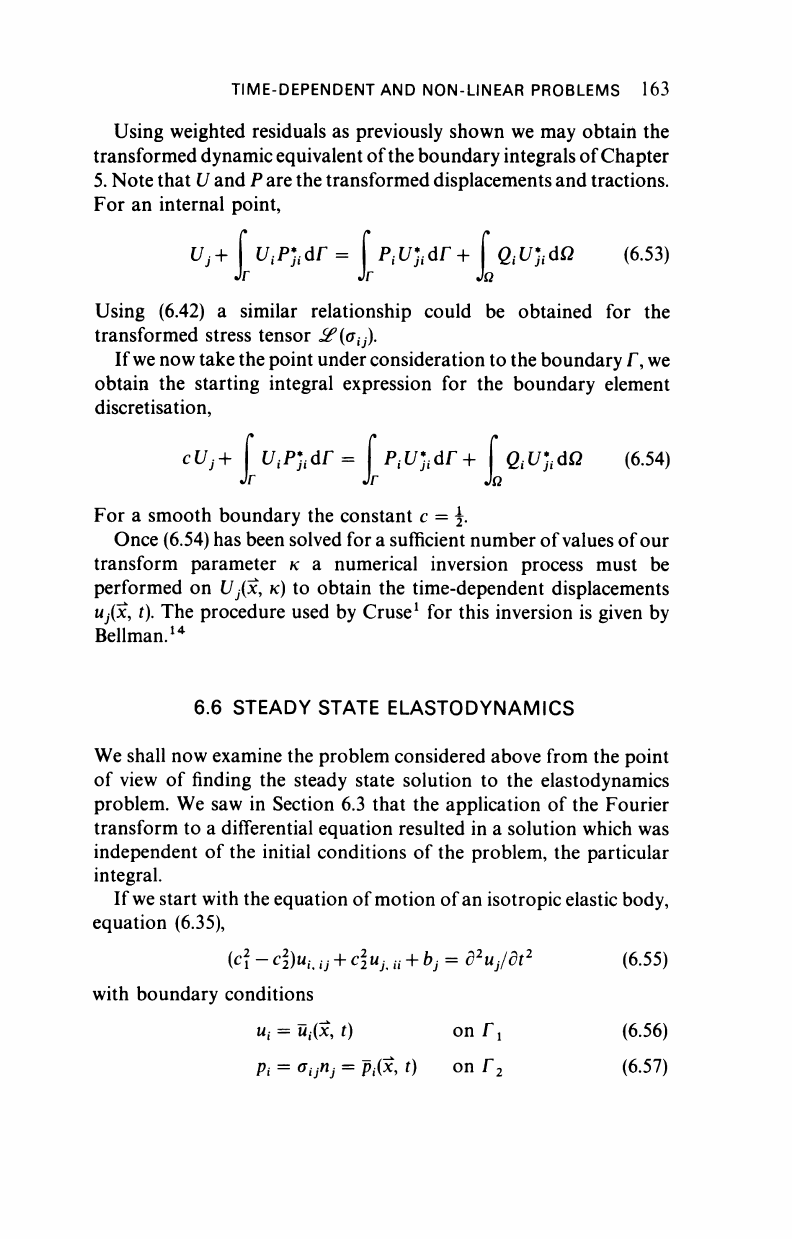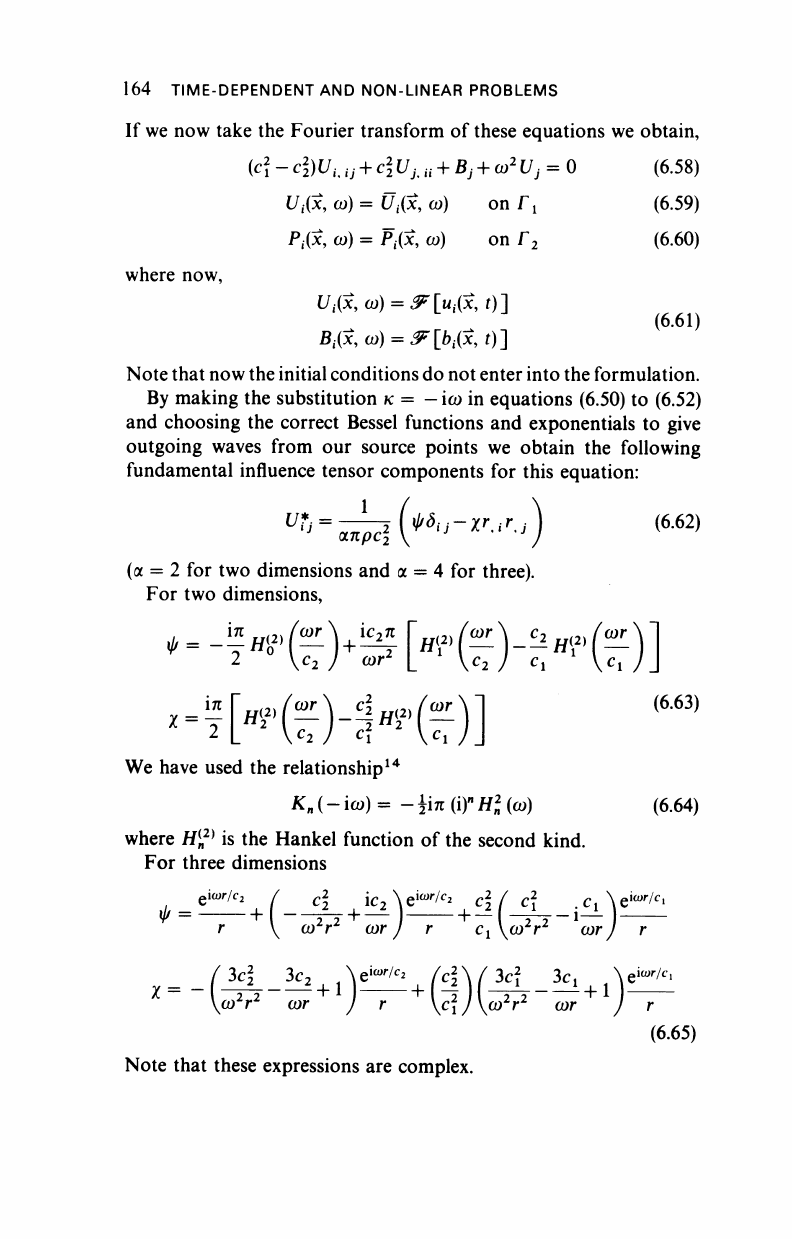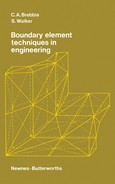
TIME-DEPENDENT AND NON-LINEAR PROBLEMS 163
Using weighted residuals as previously shown we may obtain the
transformed dynamic equivalent of the boundary integrals of Chapter
5. Note that U and P
are
the transformed displacements and tractions.
For an internal point,
u
j+
U,P*
Jt
άΓ
= f P,
1/J,άΓ
+ f ß
f
U'
Jt
dß (6.53)
Using (6.42) a similar relationship could be obtained for the
transformed stress tensor if
(σ
0
·).
If we now take the point under consideration to the boundary Γ, we
obtain the starting integral expression for the boundary element
discretisation,
cUj+j I/, PJ,άΓ=ί P
t
I/J,άΓ + f QtU),άΩ (6.54)
For a smooth boundary the constant c = .
Once (6.54) has been solved for a sufficient number of values of our
transform parameter κ a numerical inversion process must be
performed on I//*, k) to obtain the time-dependent displacements
Uj(x,
t). The procedure used by Cruse
1
for this inversion is given by
Bellman.
14
6.6 STEADY STATE ELASTODYNAMICS
We shall now examine the problem considered above from the point
of view of finding the steady state solution to the elastodynamics
problem. We saw in Section 6.3 that the application of the Fourier
transform to a differential equation resulted in a solution which was
independent of the initial conditions of the problem, the particular
integral.
If
we
start with the equation of motion of an isotropic elastic body,
equation (6.35),
(c
2
i
~cl)u
u u
+ cu
h u
+ bj = d
2
uj/dt
2
(6.55)
with boundary conditions
u
t
=
M,(X,
t) on Tj (6.56)
Pi = °ijnj = Pi(x, t) on Γ
2
(6.57)

164 TIME-DEPENDENT AND NON-LINEAR PROBLEMS
If we now take the Fourier transform
of
these equations we obtain,
(c
-
c)U
u
u
+ cU
h u
+
Bj
+
ω
2
Uj
= 0
(6.58)
Utf, ω)
= Ufa
ω)
on Γ
1
(6.59)
Ρ,(χ, ω)
=
Ρ
(
(χ, ω)
on Γ
2
(6.60)
where now,
l/,(x, ω)
=
^[Μ,(χ,
0]
(6.61)
Note that now the initial conditions do not enter into the formulation.
By making the substitution
κ = -
ίω in equations (6.50) to (6.52)
and choosing the correct Bessel functions and exponentials
to
give
outgoing waves from
our
source points
we
obtain
the
following
fundamental influence tensor components for this equation:
"''-ϊάϊ
(*«■'-*'·"·')
<6
·
62)
(α
= 2
for two dimensions and
a = 4
for three).
For two dimensions,
*-y«K?)
+
^["K?)-^K?)]
We have used the relationship
14
K
n
(-
ΐω)
= -
±ίπ
(i)
n
#
2
(ω) (6.64)
where H
(
*
}
is
the Hankel function
of
the second kind.
For three dimensions
e
ia>r/c
2
/
c
2
lc
e
icor/c
2
^2 / Λ
C
e
iö
W
c
i
(6.63)
r
orr*
a>r
/ r c
x
arr cor/ r
χ=
/
3c
2
3c
2 |
e™/*
|
/c
2
/
3c
2
3c,
|
e^
ω
2
Γ
2
ωΓ / r
^ι/ω
2
Γ
2
ωΓ ) r
(6.65)
Note that these expressions are complex.
..................Content has been hidden....................
You can't read the all page of ebook, please click here login for view all page.
